Last weekend, Storm Ciara tore through Belgium, England, France, Germany, and Poland; thus forcing some matches to be postponed. Concerns were rising in France as Ligue 1 leaders Paris Saint-Germain were scheduled to host Olympique Lyon in the late Sunday match. However, the fixture went on brilliantly amidst the torrential downpour.
It’s safe to say that the game was a tale of two halves. The first half belonged to the host with two goals from Ángel Di María and Kylian Mbappé. Lyon replied by scoring thrice in the latter half, but one coming into their own net. Without further ado, this tactical analysis will inform you how the match unfolded.
Lineups
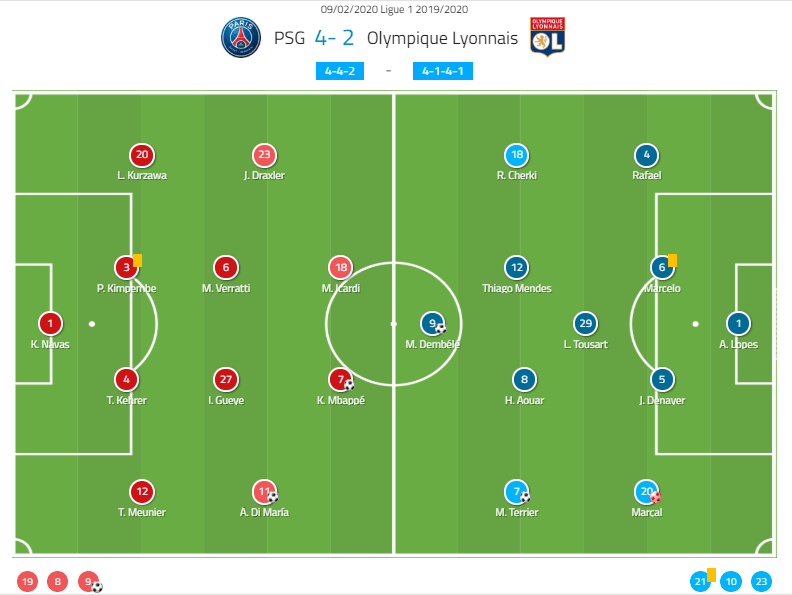
Thomas Tuchel opted 4–4–2 for his team in this game. The duo of Thilo Kehrer and Presnel Kimpembe were chosen to start at the heart of the defence. In front of them, Idrissa Gana Gueye and Marco Veratti were picked to control the midfield. Names like Leandro Paredes, Edinson Cavani, and Pablo Sarabia had to start the game from the bench.
In the opposite side, Rudi García set his team up in 4–4–2. Their main shape was not 4–1–4–1 as Wyscout suggested above; even though they did use that formation for some occasions. One interesting choice by the manager was the inclusion of 16-year-old Rayan Cherki to the starting lineup. The youngster played as the right-winger to support Moussa Dembélé, Houssem Aouar, and Martin Terrier in Lyon’s offensive department. Les Gones’ dugout was filled with names like Bertrand Traoré, Karl Toko Ekambi, and Kenny Tete.
Lyon’s defensive setup
Despite playing away from home, García deployed rather aggressive defense tactics to nullify PSG. He instructed his team to press high into Les Parisiens’, even up into their penalty box. Not only that, he tasked his men to do a man-oriented defending to their opponents. The objective behind this was to prevent PSG from building their plays smoothly from the back; thus forcing them to play more direct.
In the process, Lyon only used their midfielders and forwards to press the Parisians. It means they had six players against seven PSG players. This would leave the on-ball player with no nearby passing options; thus limiting his options. Not only that, but one of Lyon’s forward could also use his cover-shadow in the press. This would allow the forward to press the on-ball opponent while closing the passing lane to his teammate.
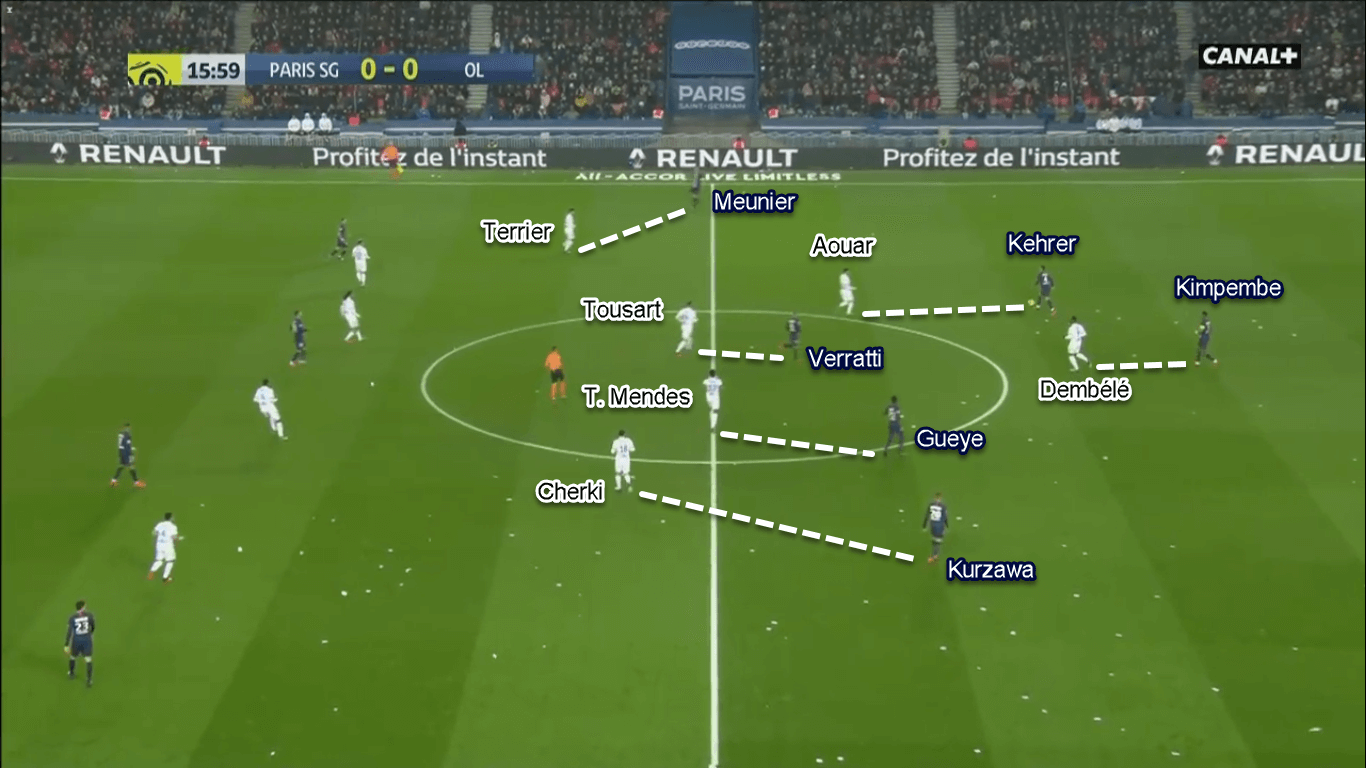
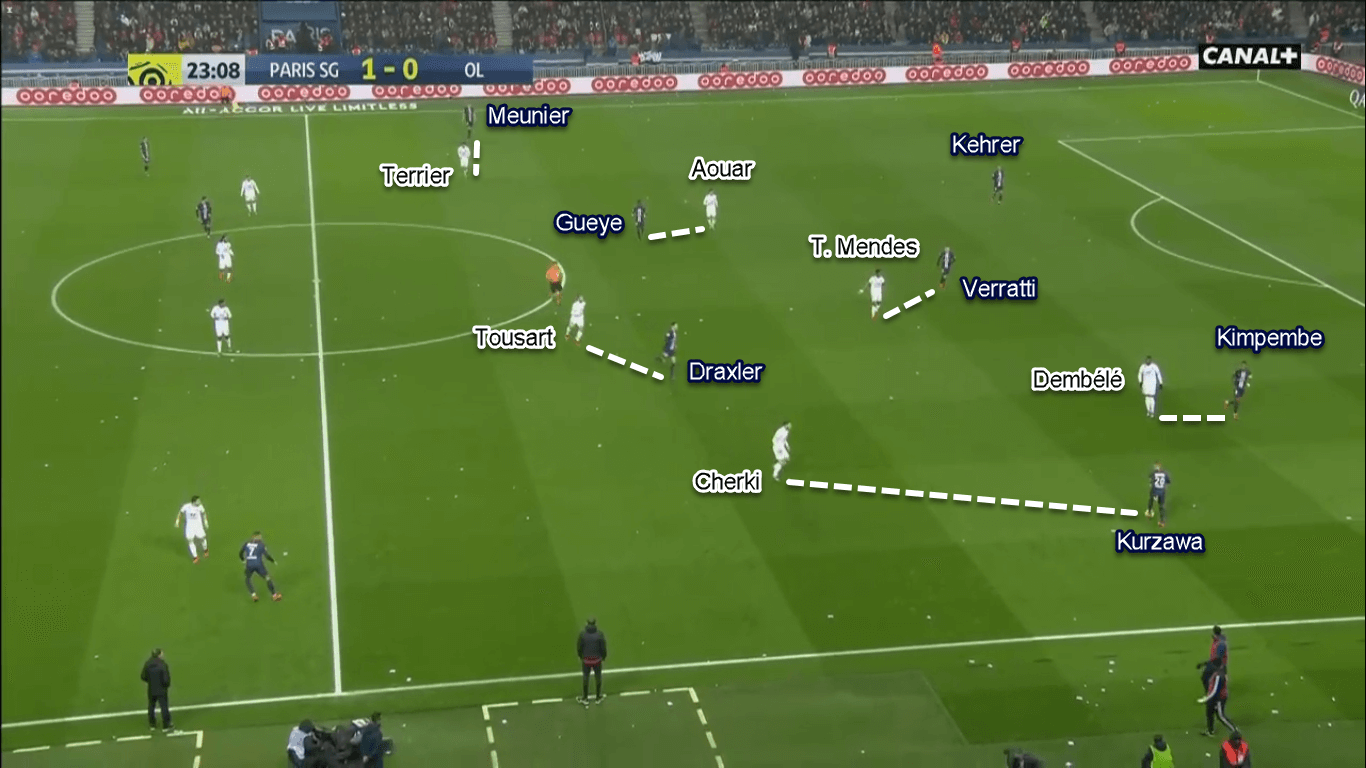
Behind the six men, García instructed his defenders to stay in the backline rather than joining the press actively. However, due to the nature of Lyon’s high press; their backline also had to move forward. This made the visitors played in a rather high defensive line. On top of that, playing a high line would also shorten the distance between Lyon’s backline to their midfielders.
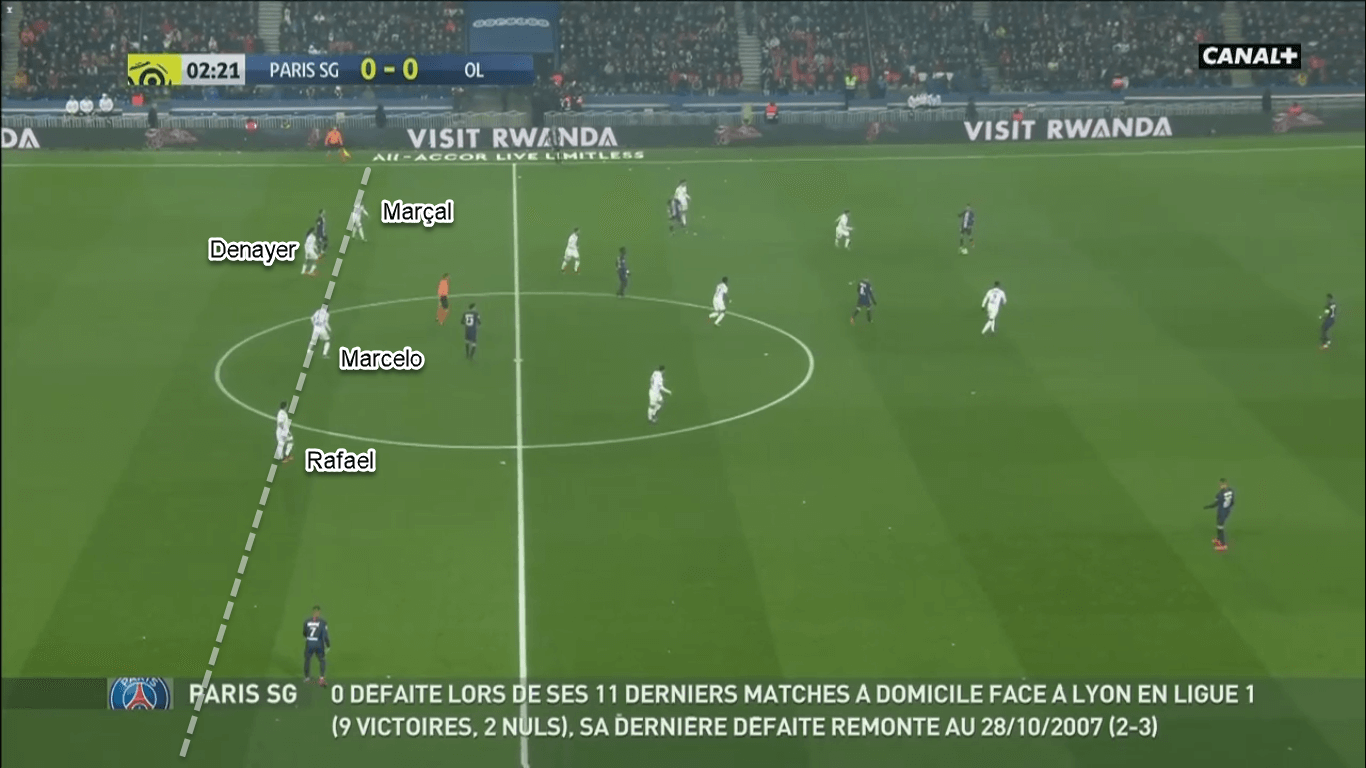
Issues in Lyon’s defensive tactics
In this part of the analysis, we’re going to see Lyon’s defensive issues. In their man-oriented defending, Lyon put their focus more heavily on closing Verratti and Gueye. The particular tactic was chosen to prevent PSG’ midfielders from receiving the ball comfortably. If they couldn’t receive the ball, they wouldn’t be able to distribute; therefore reducing PSG’s offensive threat.
To do that, both Thiago Mendes and Lucas Tousart would often leave their area to follow Verrati and Gueye. They would do this even when the PSG’ midfielder(s) drop closer to their defenders. At times, Mendes or Tousart could be found next to Aouar sometimes; even simultaneously. As a result, this aggressive move by the midfield duo would almost likely open huge space in between the lines.
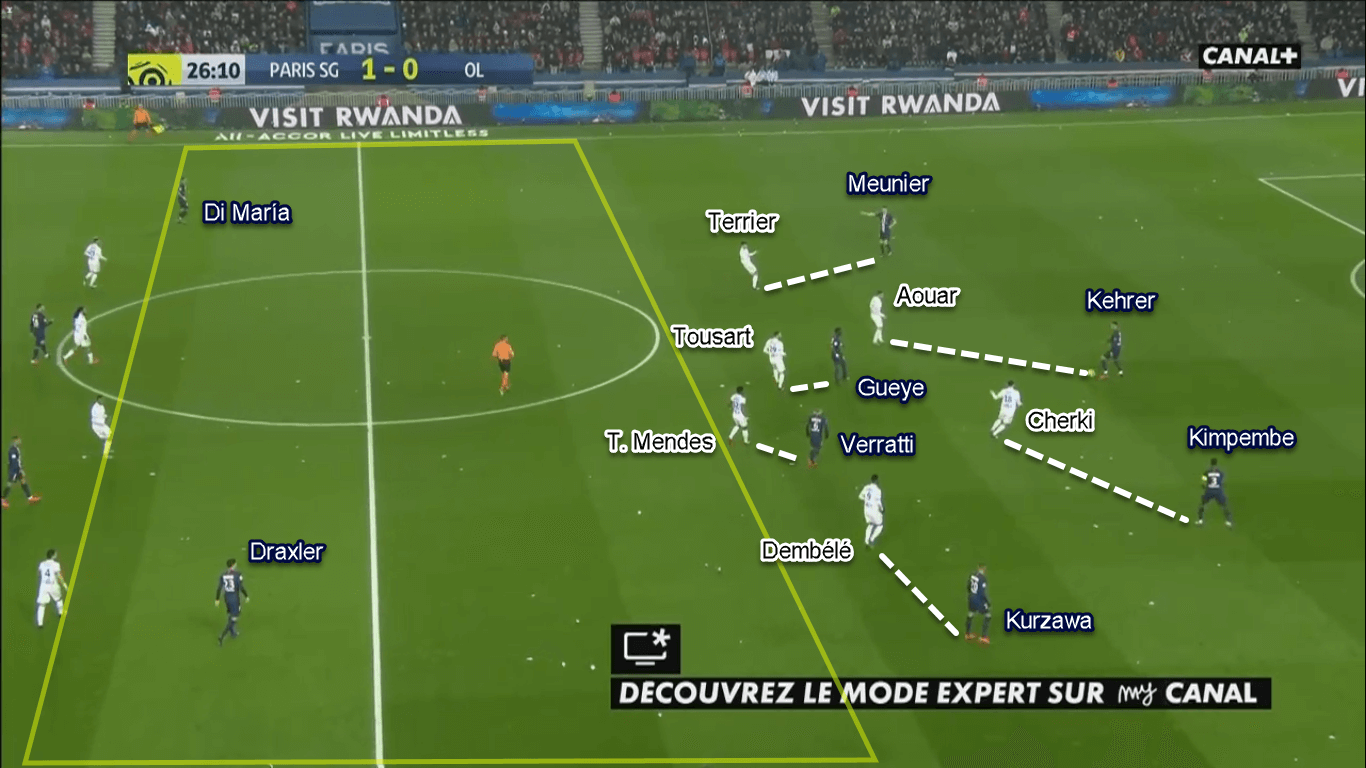
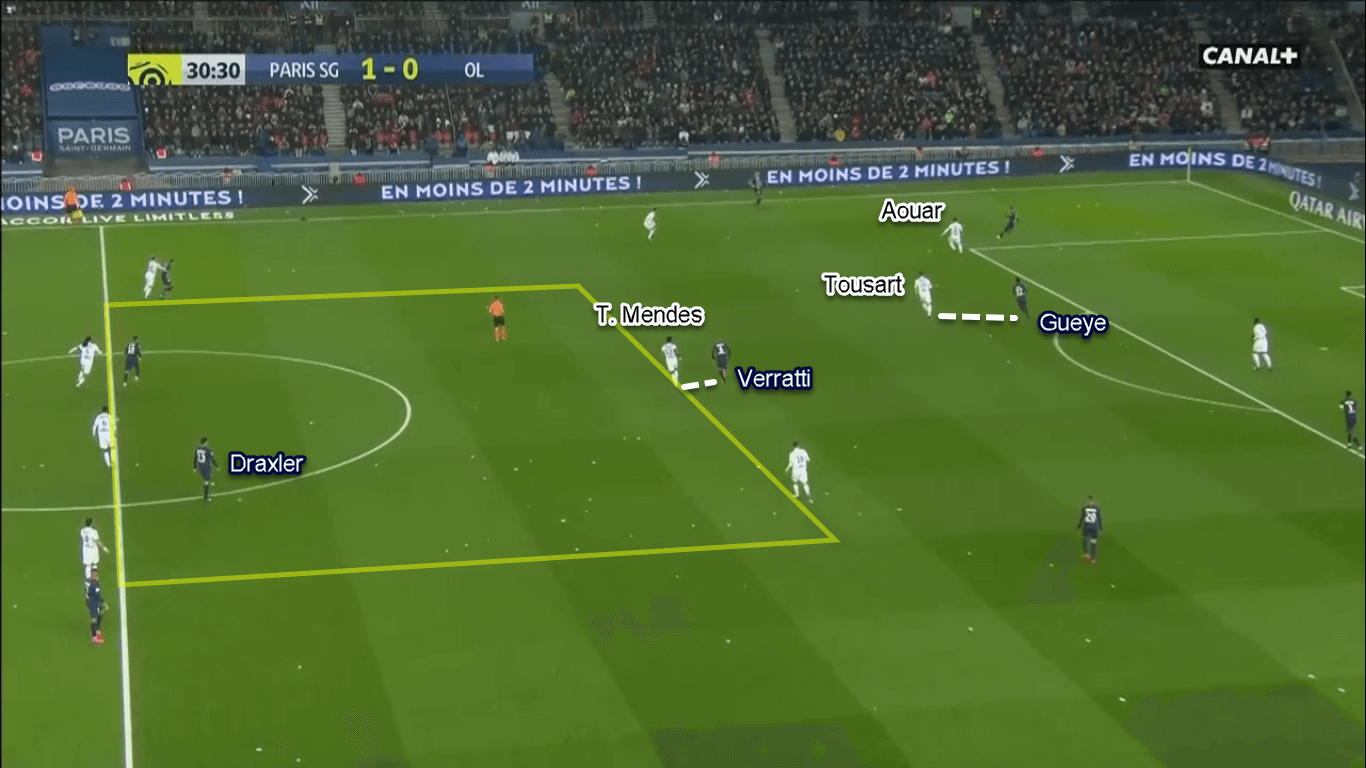
Tuchel’s tactics: prelude
The statistics show PSG ended the game with roughly 70% ball possession. Not only that, but the stats also reveal that PSG had 16 shots compared to Lyon’s seven; underlining their dominance in this game. This part of the analysis will inform the offensive tactics used by Tuchel’s team.
Mainly, PSG used a lopsided 3–2–5 shape on the ball. The first notable feat was the different roles between the home side’s full-backs. Thomas Meunier was instructed to play higher and provide width in the final third. Oppositely, Layvin Kurzawa was tasked to play deeper, even though in a relatively similar flank zone.
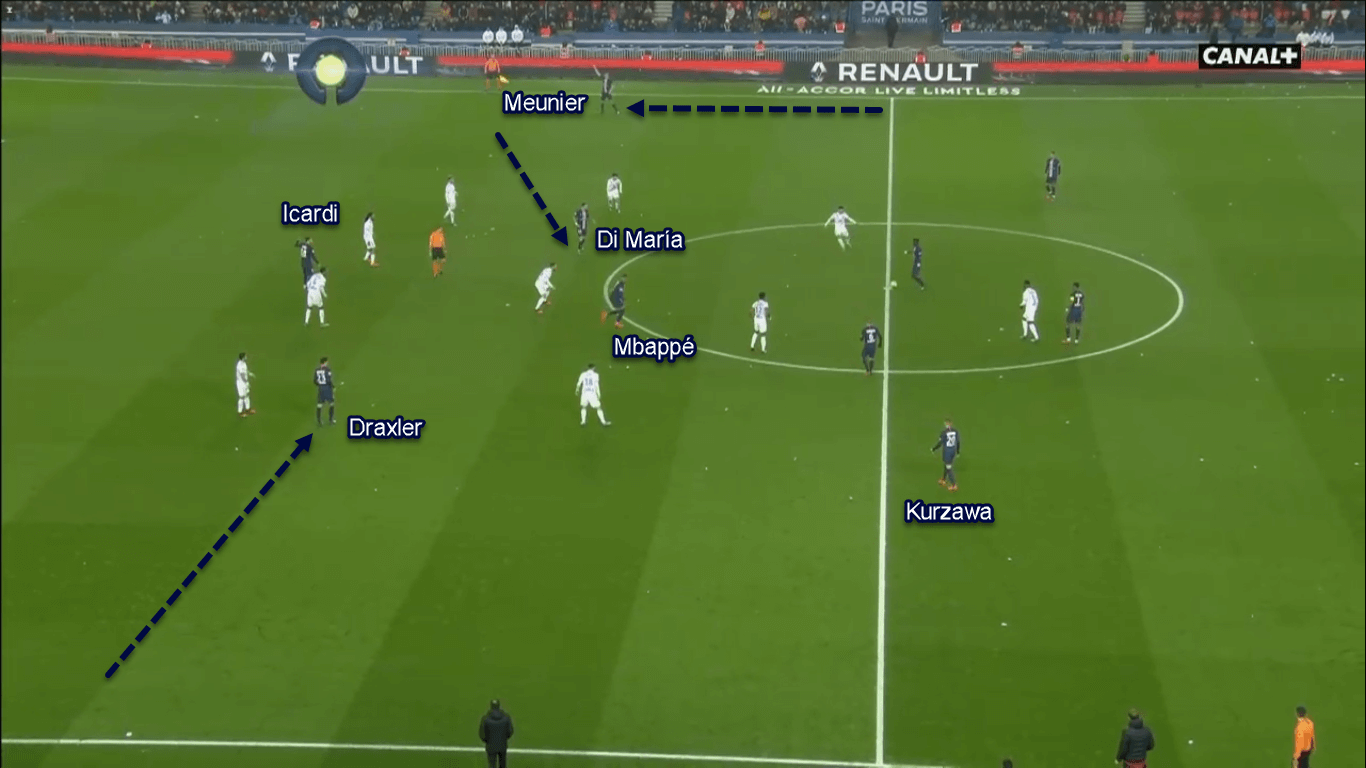
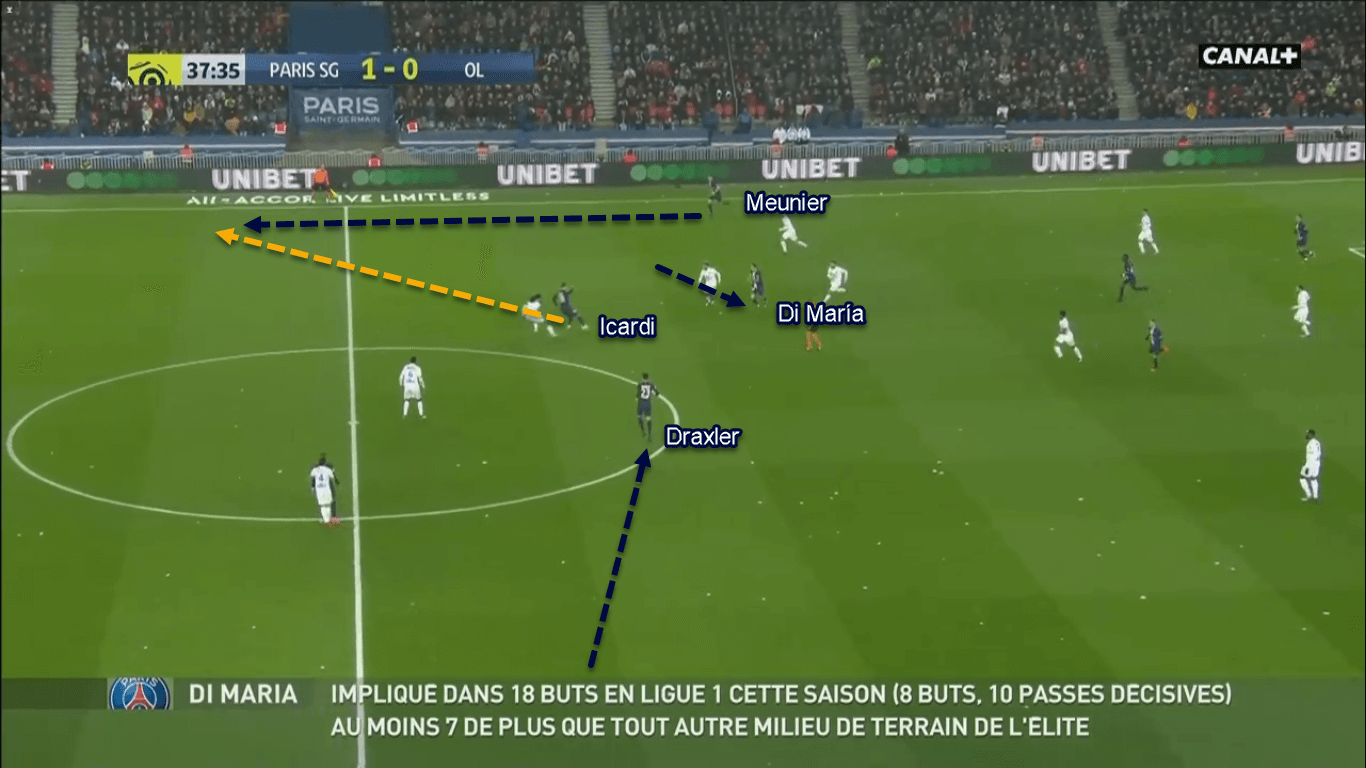
Tuchel’s tactics: exploiting the man-oriented defending
Another notable feat can be found in PSG’s offensive department. Tuchel mainly instructed his wingers to play more narrowly. Furthermore, they would appear in between the lines to exploit Lyon’s reoccurring defensive issue. They could do that more freely because Mauro Icardi was given different offensive task. The Argentine was instructed to pin the backline, therefore preventing Lyon’s defenders from stepping up and support their midfielders.
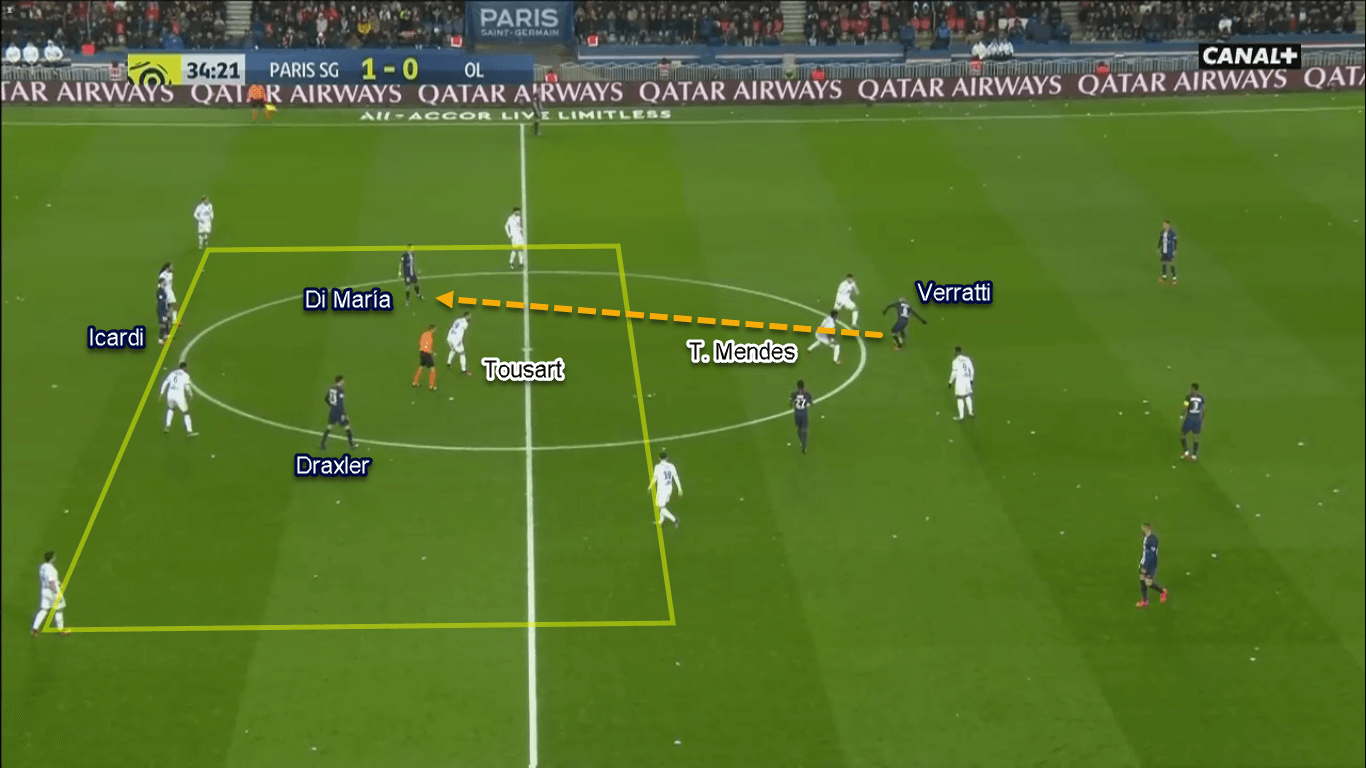
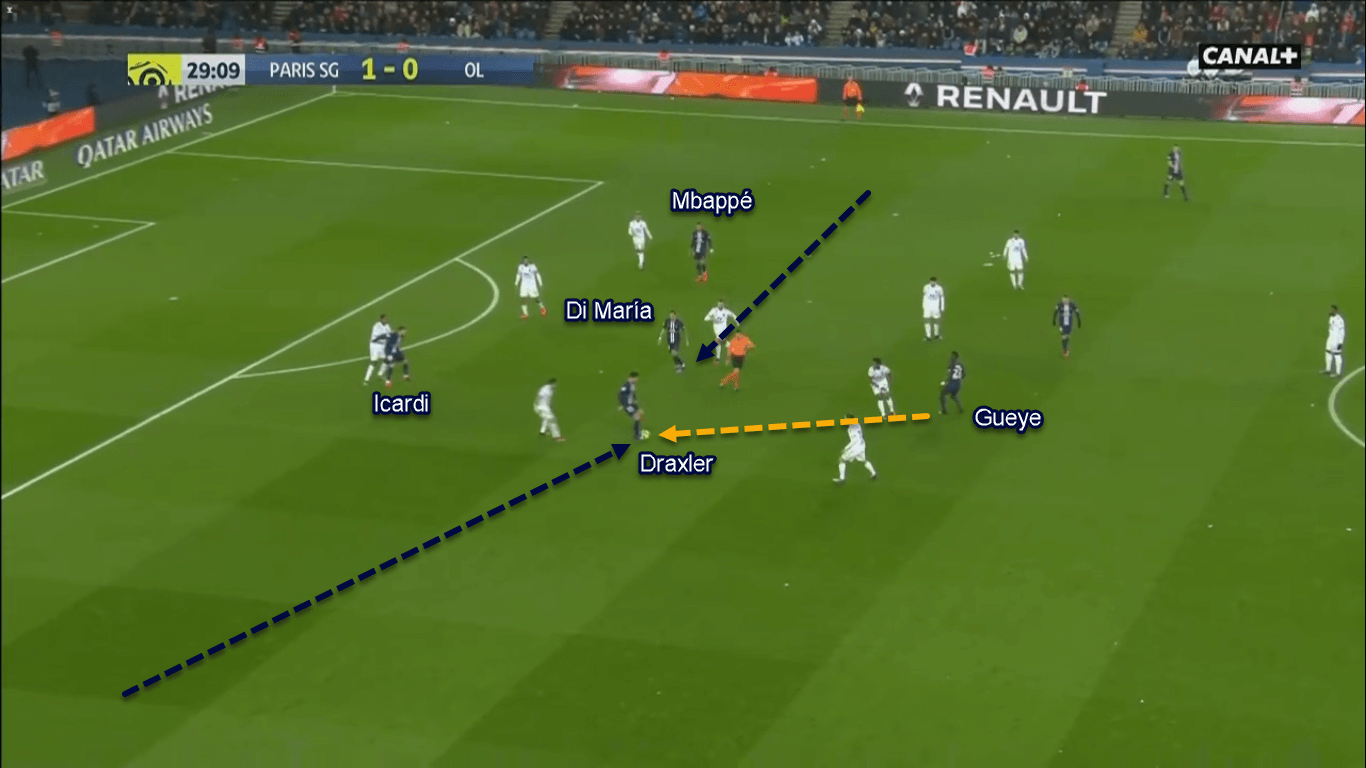
Tuchel also gave Di María, Mbappé, and Julian Draxler the freedom to rotate their positions. This freedom — in addition to their various skillset — allowed the trio to be very unpredictable in the final third. For example, they could combine with each other in between the lines. They could also dribble their way into the box, as well as releasing their striking partner in behind whenever needed.
Another option PSG used to exploit Lyon’s man-oriented defending was by using their midfielders. At times, Tuchel allowed Verratti and Gueye to drift away from the central area; pulling their markers in the process. With the full-backs staying wide, this chain of movement would open a gap inside Lyon’s pressing block. As a result, one of PSG’s defender would be free in space.
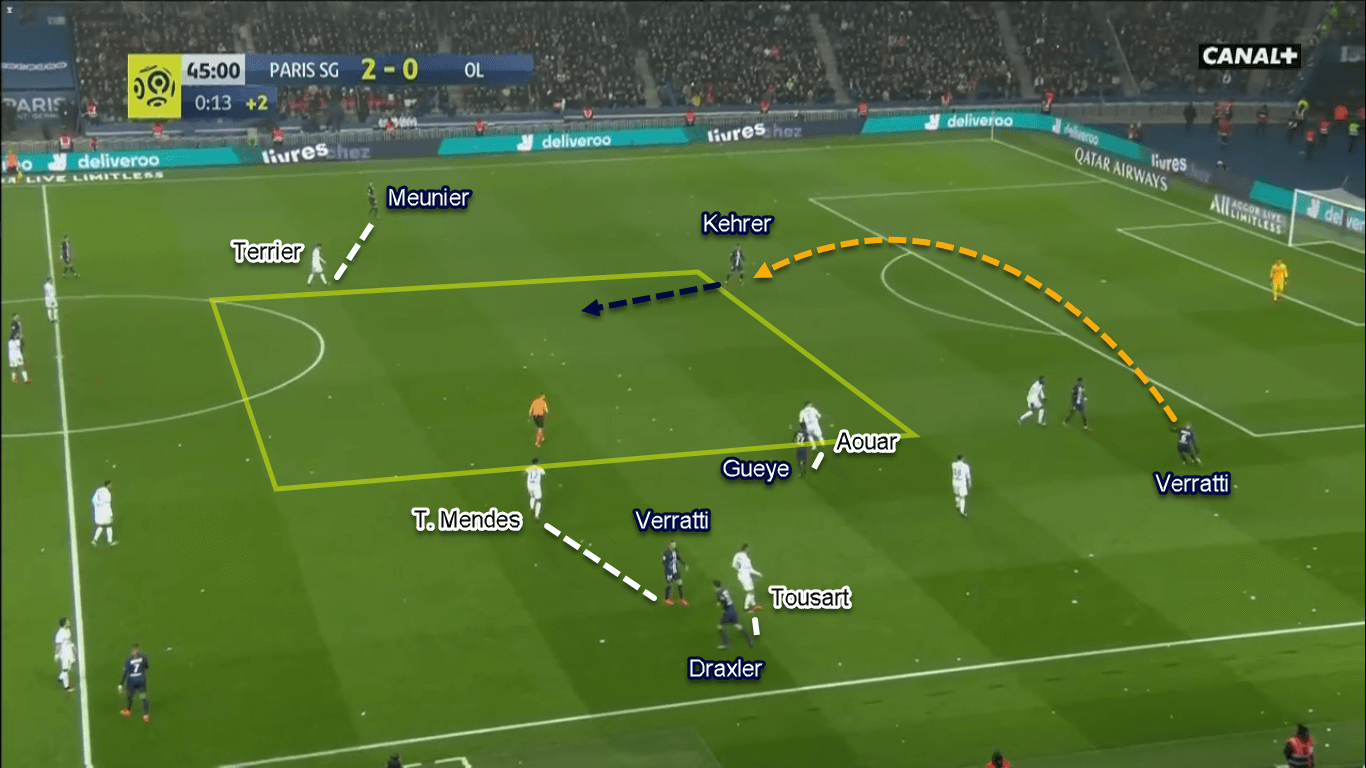
Tactical adjustments from García
Coming to the second half, García made a change to his defensive tactics. He opted a safer approach for Lyon by putting his men in a mid-block 4–4–2; relinquishing the more energy-consuming high-press. In the 4–4–2, García asked his men to stay compact, both horizontally and vertically. The tactic was chosen to close the gap between Lyon’s lines.
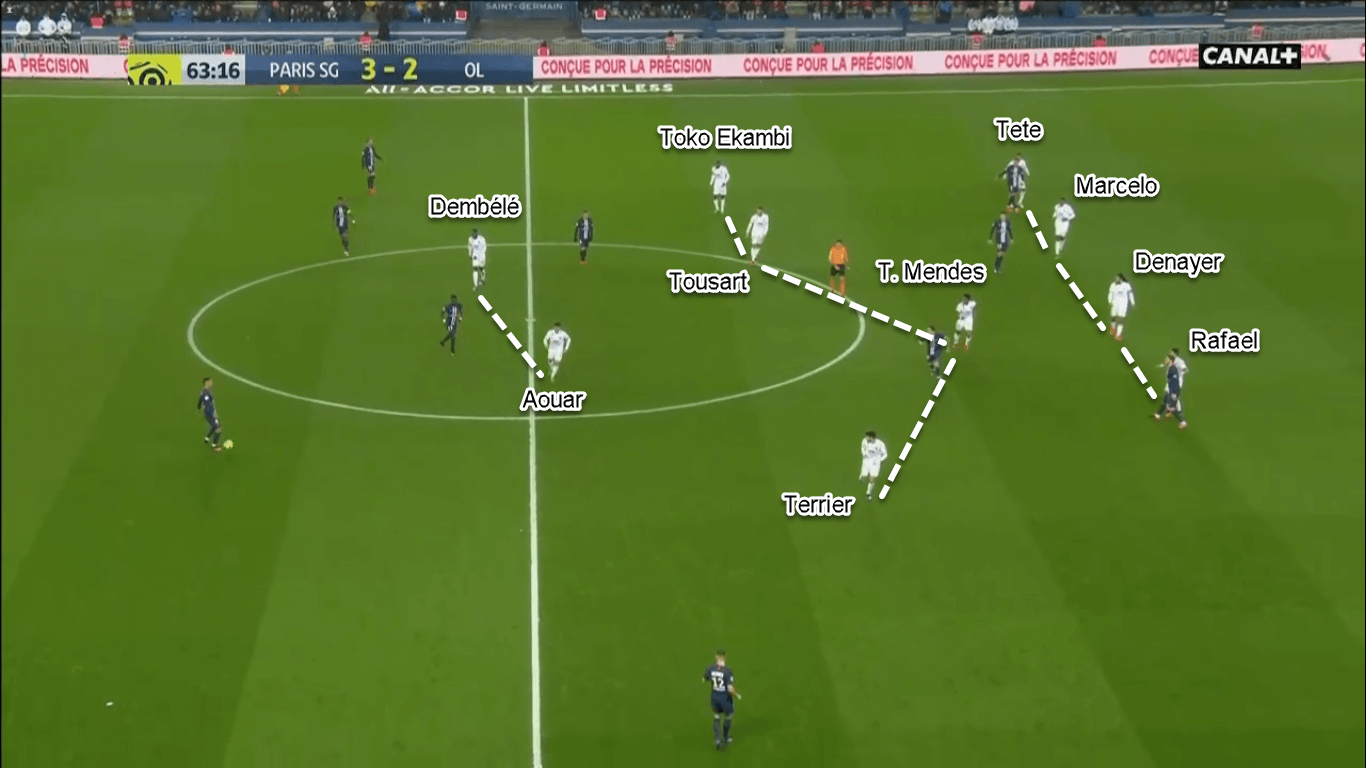
Knowing that his team were trailing by three goals, the manager made two substitutions. The physical Toko Ekambi replaced the 16-year-old Cherki, while Tete subbed in for the own-goal-scorer Fernando Marçal. Moreover, Tete’s introduction forced Rafael da Silva to shift into the left full-back position.
García focused to attack more often from the right flank in the second half. This approach probably was preferred due to Kurzawa’s inferior defensive quality compared to Meunier. Not only that but the left-winger Draxler was also not known for his defensive contribution; particularly to track back his opponent. For a fact, Dembélé’s goal started from PSG’s left-hand-side defensive area.
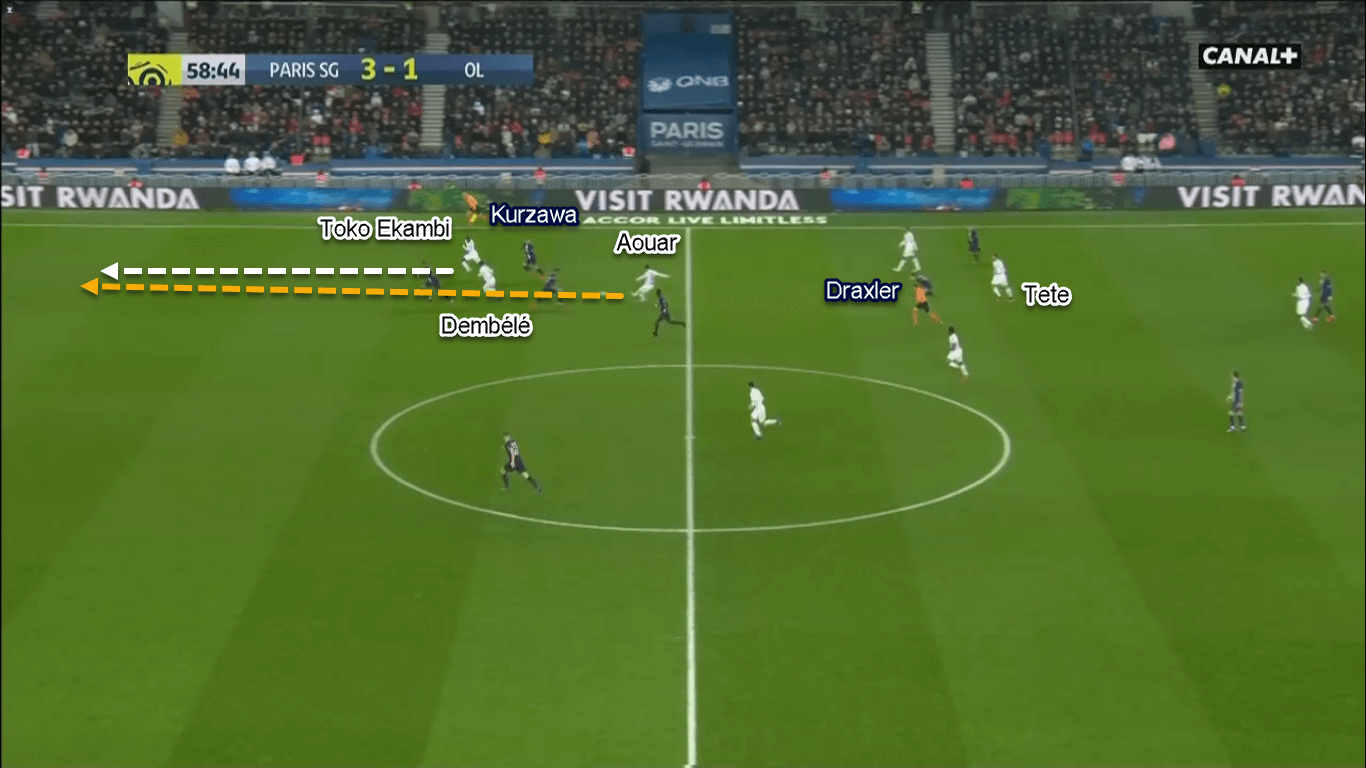
Lyon’s second-half offensive plays
Leading by three goals, PSG shifted their gears down and allowed Lyon more time with the ball. Whether it was complacency or their inability to defend properly, Tuchel’s men conceded two goals in just seven minutes. Despite everything, credits must be given to the visitors and their efficient attacking display.
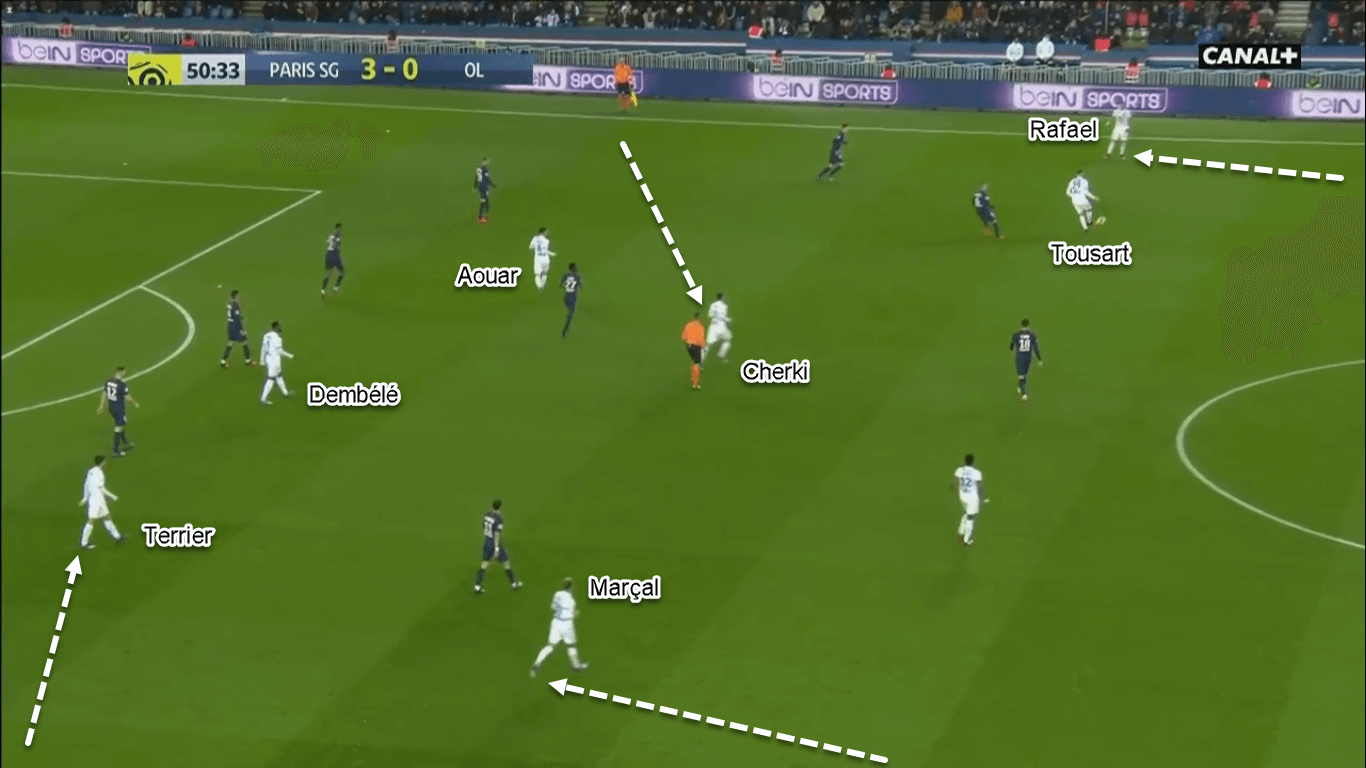
Offensively, Lyon deployed a bit similar approach with PSG. Like the home side, Lyon instruct their wingers to tuck inside alongside their centre-based attacking comrades. Furthermore, Dembélé was tasked to pin himself to PSG’s backline; similar to Icardi’s duty. The objective of this particular task was to allow his attacking partners more space in between the lines.
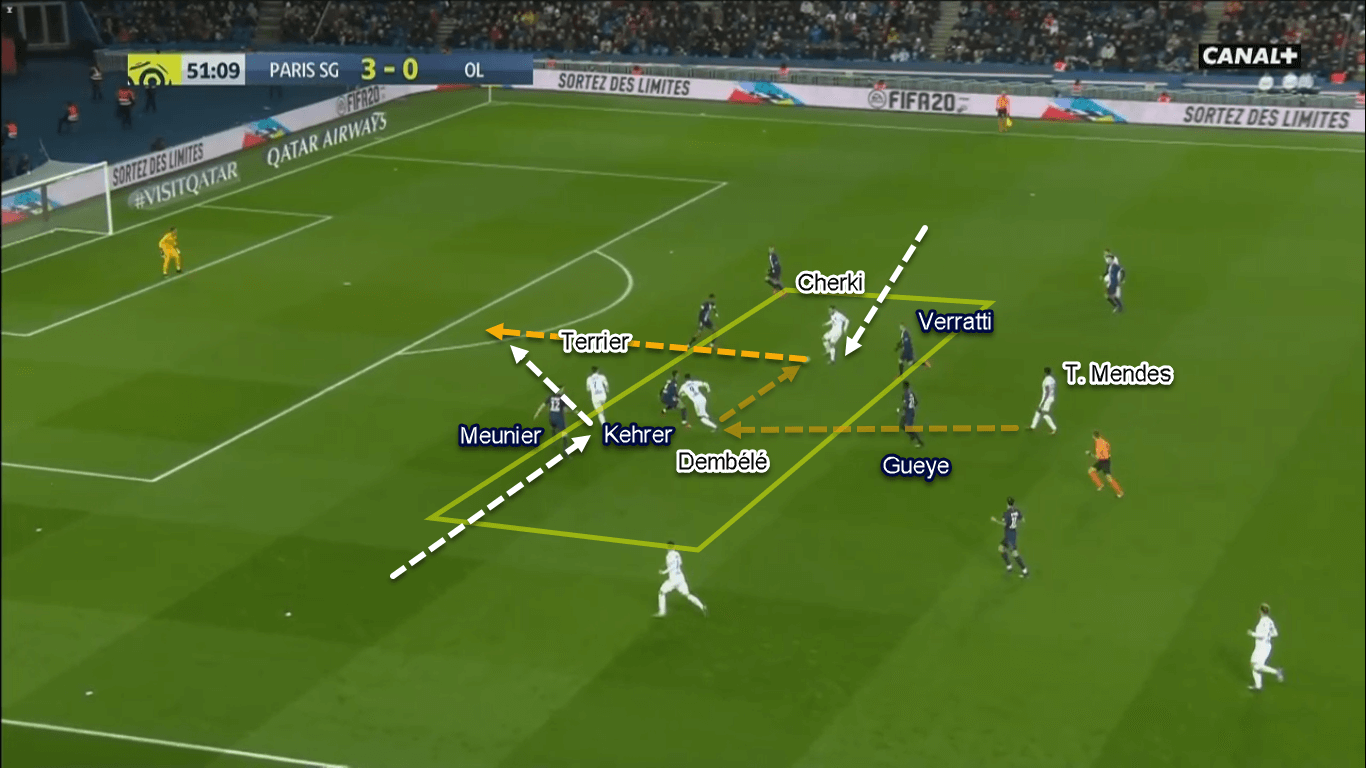
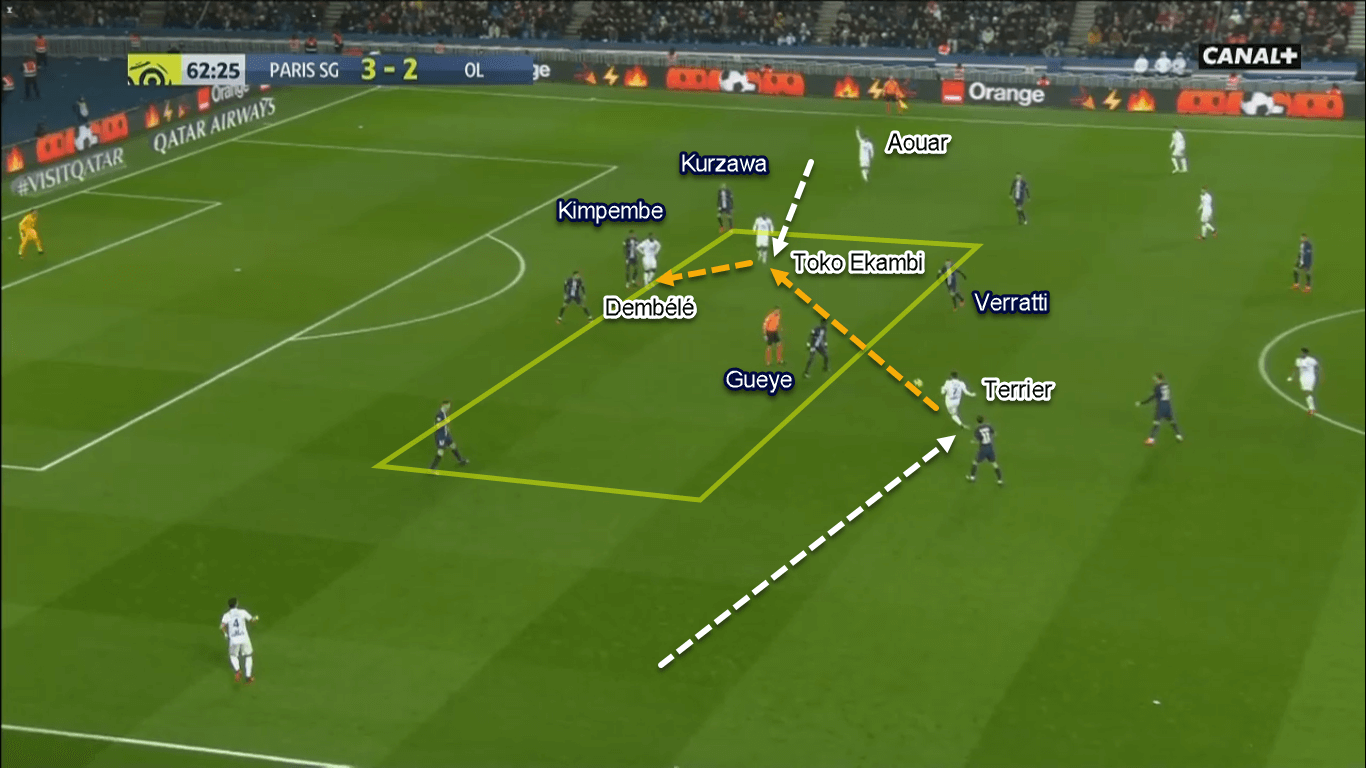
In that particular area, narrow attackers allowed Lyon to make more combinations in the final third. Either by making runs from the defender’s blind-spot, pushing the ball in behind, or serving a forward with a cut-back; dangerous options were available to punish PSG’s backline in that zone. The statistics show Lyon had 0.84 expected goals (xG) in the second half; compared to 0.03 xG in the first 45 minutes.
Sarabia with the stretch
Noticing a weakness in his left side, Tuchel subbed in Sarabia for Draxler. The inclusion of the left-winger was to keep Toko Ekambi and Tete busy, therefore limiting their attacking threats. The Spaniard offered different skillset to Draxler, which will be explained below.
Compared to the German, Sarabia was often found in the flank area; hugging the touchline rather than tucking himself inside. With Sarabia and Meunier playing wide, now PSG had players to stretch Lyon’s backline in the advanced area.
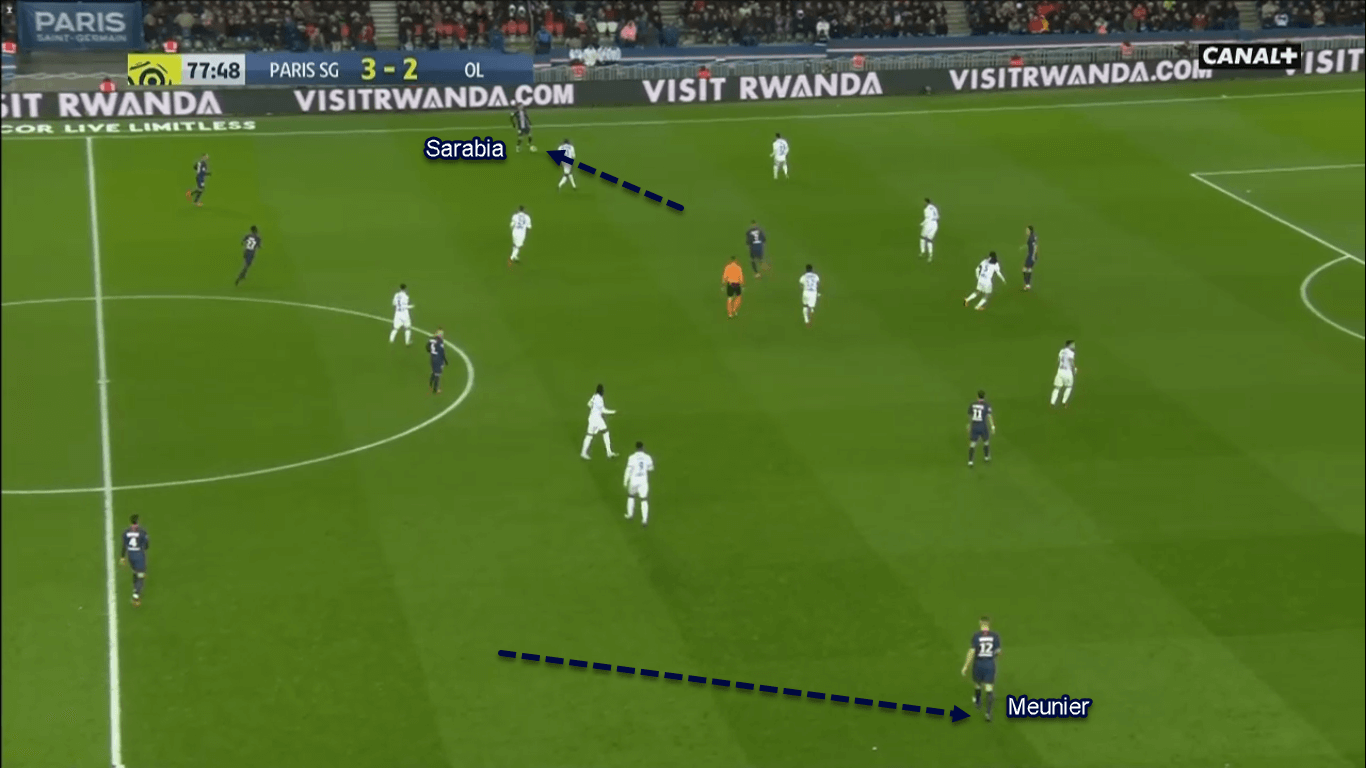
Sarabia’s presence on the left would also pull Tete’s focus to him. At times, the right-back would follow Sarabia; thus making him leave the backline. As a result, this granted Mbappé ample space to attack Marcelo; a qualitative advantage for PSG.
First, he could attack the space behind the defender with his pace. Once, Sarabia found Mbappé in behind — leaving Marcelo on the floor in the process. This sequence ended in Mbappé making a shot that hit the post; 0.33 xG per the stats.
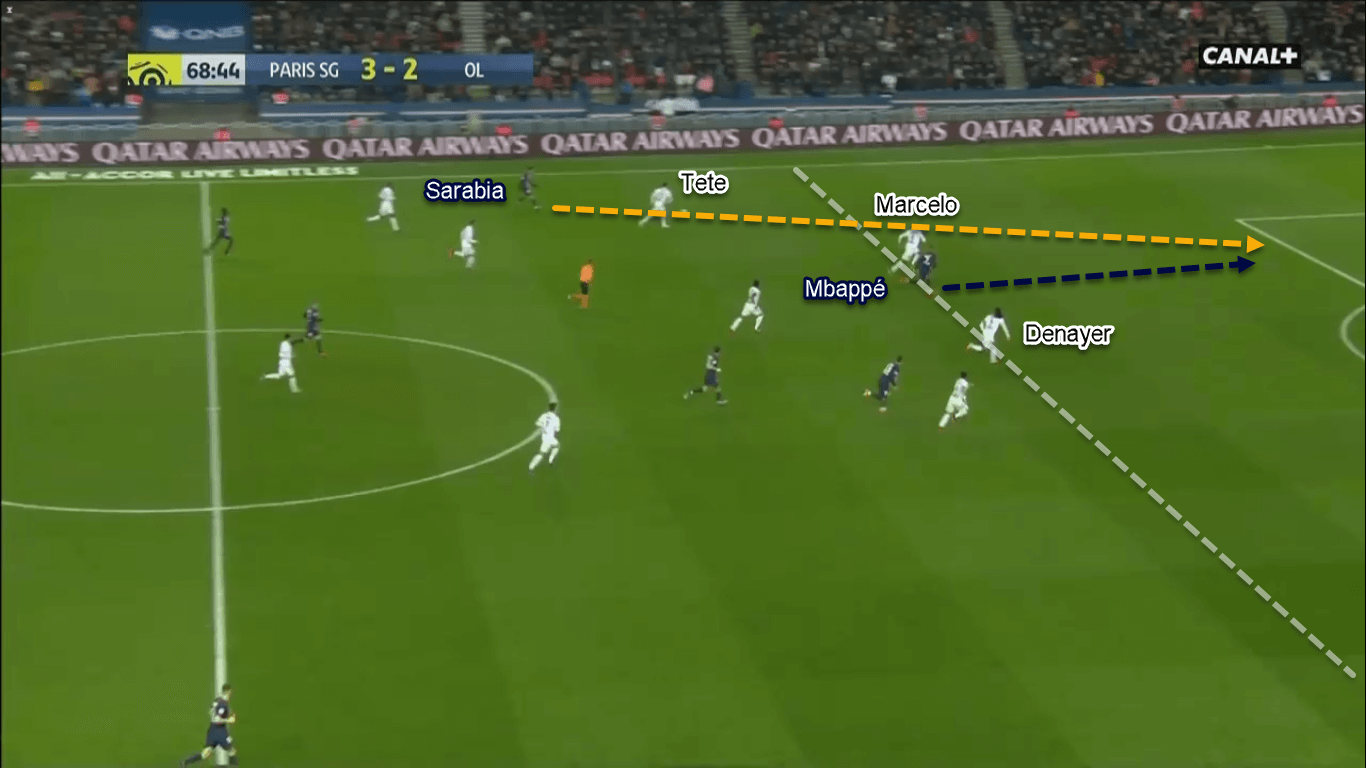
Second, Mbappé could burst away from Marcelo to appear in between the lines. By doing so, he would be free in the danger zone to continue the attack. For a fact, such movement started the sequence of Cavani’s goal.
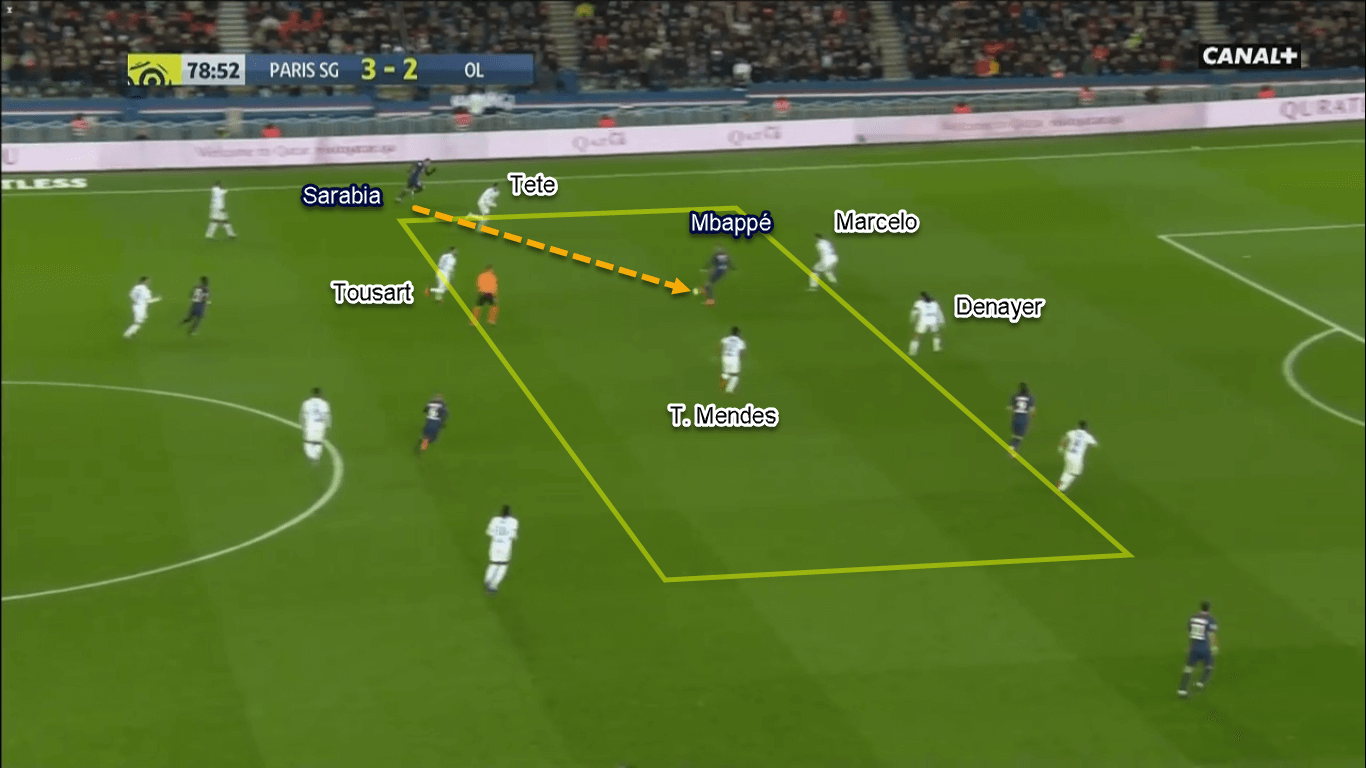
Conclusion
A tale of two halves, surely. Clever tactics from both managers were the reason why this high-octane match ended with six goals. Tuchel punished García’s aggressive defence tactics in the first half, while the Frenchman took advantage of Tuchel’s men’ lack of discipline after the break.
At the end of the match, PSG proved that they’re still one tier above Lyon. The reason is mainly down to the attacking prowess of Les Parisiens; especially Mbappé and Di María’s unpredictability. However, this game confirmed that Tuchel needs to improve his team’s defensive display. If a mid-table Ligue 1 side could score twice in seven minutes, imagine what Borussia Dortmund can do when they meet later this month.
Onto the next one.




Comments